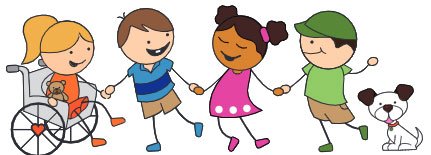Take care of your mental and physical health without leaving home or spending a small fortune!
Taking time for yourself is generally a low priority in our American culture. We are taught to work harder, faster, and longer in order to excel and attain the coveted “American Dream.” Parents are expected to be rockstars in the workplace while still going above and beyond at home, and caregivers toil all day, continuously satisfying the needs of others without addressing their own. With the COVID-19 pandemic and remote learning, parents/caregivers are juggling more than ever before…and with fewer stress-relief outlets. As adults, we encourage our kids to make time for themselves and to take breaks as needed, yet we regularly neglect to do the same for ourselves.
Parents, especially caregivers of children with unique needs and/or rare diseases, must make time for self care in order to be the best versions of ourselves that we can be. Schedule your self-care into your calendar just as you would a work meeting or a doctor’s appointment. After all, we make time for the kids’ activities and appointments, work, household duties and more, but we find it impossible to take 10 minutes to soak in the bath!
Self-Care Routines for Overwhelmed Parents
Ready for some self-care but low on time? Here are some options for taking care of yourself from the comfort and safety of your own home, for little to no cost. The self-care options are split apart into time increments to fit into busy schedules.

1 MINUTE: MEDITATION AND BREATHWORK
By simply slowing down the breath and practicing mindful breathing, in just one minute, we can lower cortisol (stress) levels, blood pressure, and more. Most smart watches have built-in breathing reminders for this very reason, so turn on those notifications. However, there is no need for fancy apps to practice mindful breathing. Simply find a comfortable seated position, breathe in through the nose and allow the breath to travel all the way to the lower abdomen. This deep breathing is also called “belly breathing.” Start with one minute and slowly graduate to more time as you are able to quiet the mind and bring the focus to the breath.
Interested in learning more about traditional meditation practices? The Buddhist Temple of Toledo hosts free Meditation for Beginners classes through Zoom twice each month. Looking for secular instruction? Check out Toledo Mindfulness Institute.

5 MINUTES: FASCIA RELEASE AND MASSAGE
You can use a tennis ball or lacrosse ball to release tight fascia, or if you want to treat yourself, you can buy a RAD roller fascia release ball online or locally from The Yogaja Shop. Lie down, place the ball on a knot or tight spot, and relax, pinning and holding there until the knot has dissolved or rolling around to massage the tight spot. The RAD Roller app has free how-to videos for targeting different areas and using various fascia release tools.
Ideally, you want to release fascia and then move afterwards, so squeeze this in before you exercise, take a walk, or clean the house. It can also feel wonderful as a precursor to your bedtime routine—just make sure to move and stretch the area for a few minutes after releasing the tight areas.

10 MINUTES: EPSOM SALT BATH
People have been taking epsom salt baths for hundreds of years to ease aches and pains. While the scientific evidence is limited, if nothing else, the warm water helps relax muscles and loosen stiff joints. Most importantly, it feels amazing, and adding a pinch of lavender to the bath adds that extra oomph.
To add to your calming bath experience, light some candles, dim the lights, listen to a podcast, read a book—anything that allows you to relax..

20 MINUTES: TAKE A CATNAP
Catnaps, or naps that last 20 to 30 minutes, are fairly well studied, and researchers have discovered a number of benefits to a short daytime snooze, including improved mood, better memory, increased alertness, reduced fatigue, and an overall more relaxed mood. Just make sure to keep it short (15-20 minutes) as sleeping longer can make nighttime sleep more difficult.
Having trouble falling asleep? Draw the curtains, turn on a fan or some gentle music, and close your eyes. Even if you don’t fall asleep, taking time to relax can be all you need to help alleviate that stress!

30 MINUTES: BUNDLE CHORES WITH PLEASURE
Think of a mindless task that you need to do and don’t necessarily look forward to–cooking, cleaning, laundry, exercise–and then link it with an activity you enjoy, such as listening to a podcast or watching your favorite TV show. Cooking dinner flies by when you’re absorbed in a good audiobook, and laundry becomes enjoyable when you link it to watching your favorite sitcom!

45-60 MINUTES: YOGA
Yoga has a plethora of benefits–restoring range of motion, lengthening the tissues of the body, tapping into the parasympathetic system–and gentle and restorative yoga practice force us to slow down and give us the opportunity to turn inward.
Yoga is a chance to meditate while simultaneously moving and stretching the body to help let go of physical tension. American Osteopathic Association cites the benefits of a regular yoga practice for both body and mind: increased flexibility, strength, and tone; improved respiration, energy, and vitality; improved cardiac and circulatory health; and protection from injury.
Many local yoga studios are now offering virtual yoga passes to “attend” class via Zoom. Need more flexibility in timing or don’t want to spend the money? YouTube has a variety of yoga classes from seasoned yoga instructors, including Toledo area yoga teacher Erin Marsh.

Next time you’re feeling anxious or stressed, try out one of these simple self-care practices. Not only are we addressing our physical and/or emotional needs with these calming practices, but we model the importance of overall wellbeing to our children.

Recent Comments